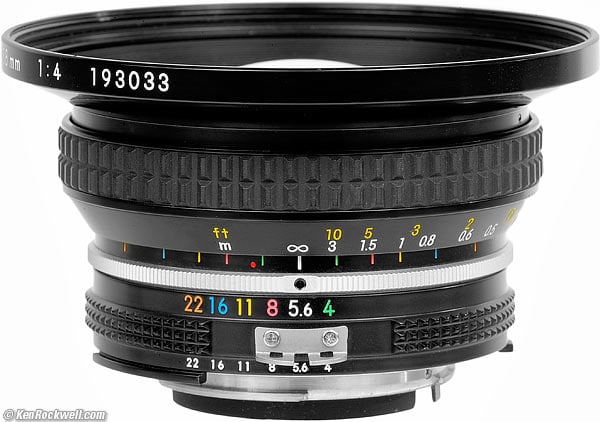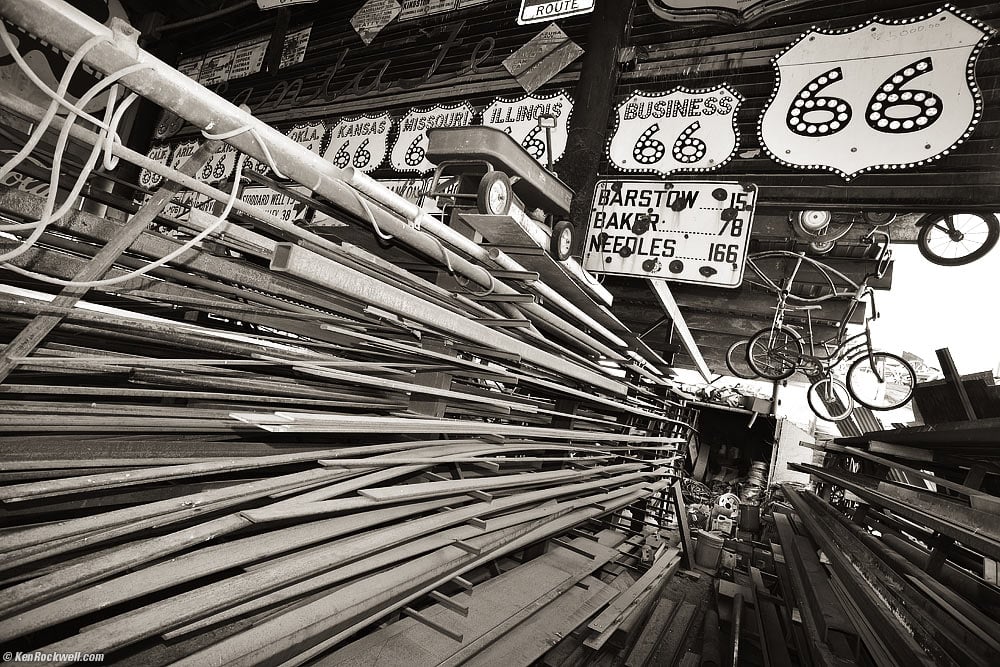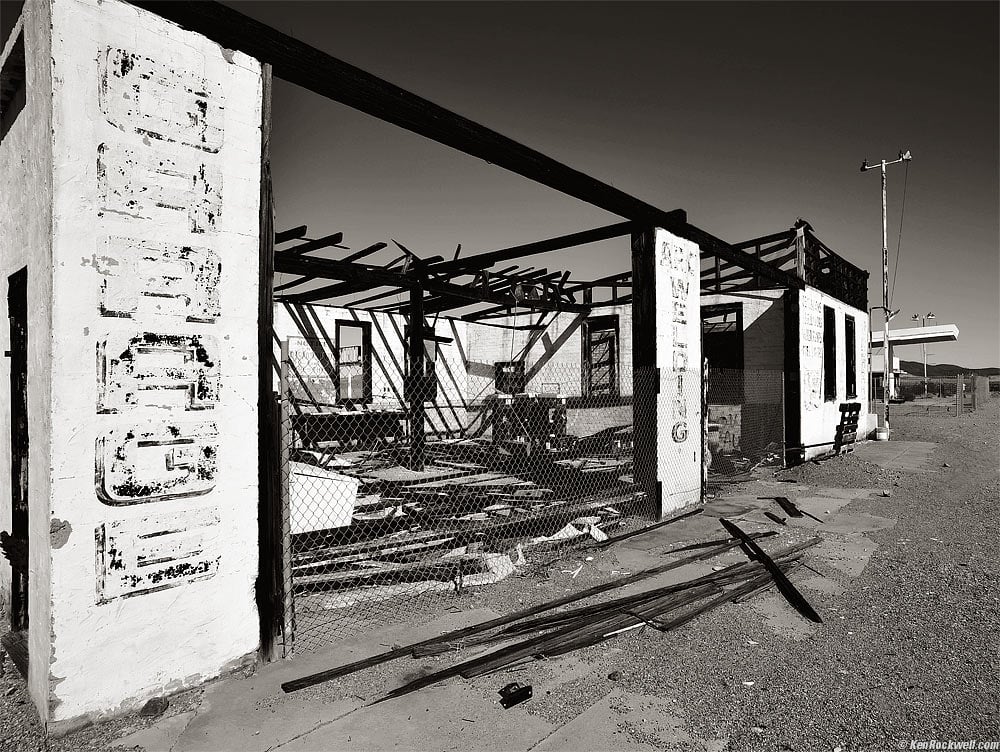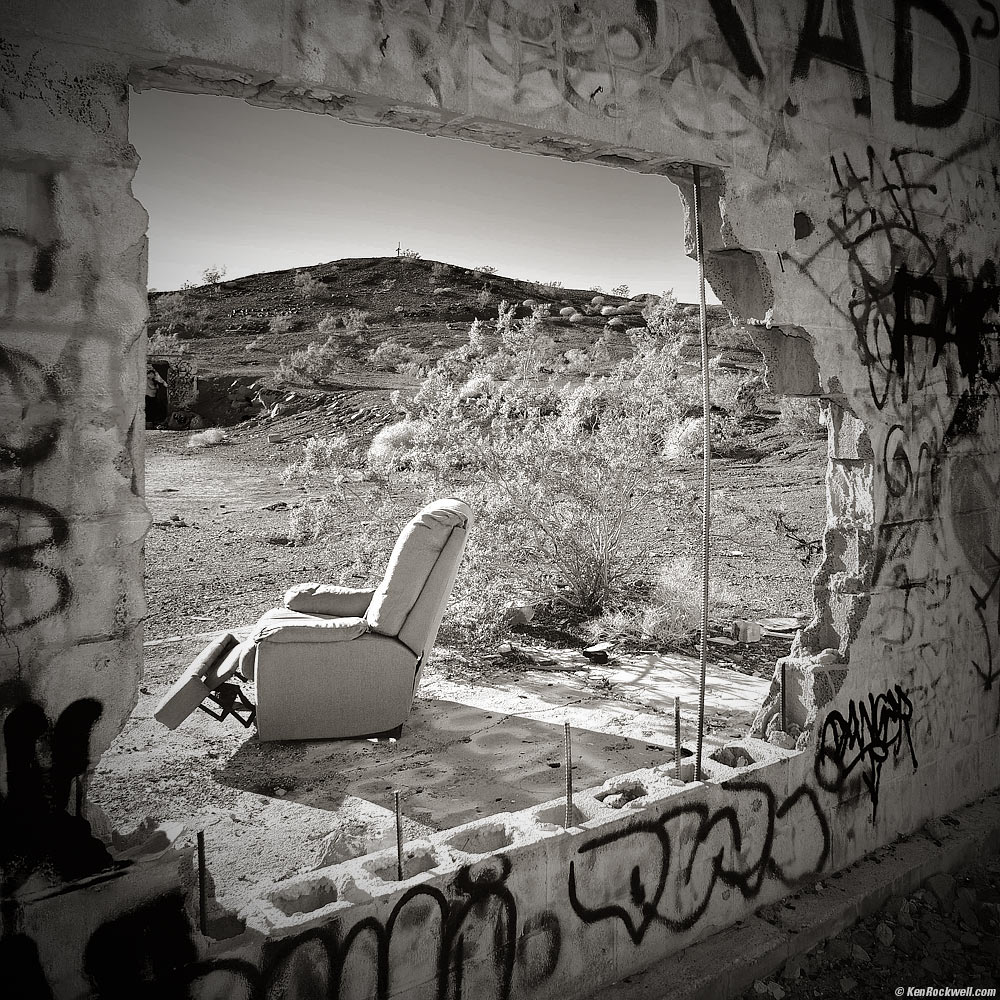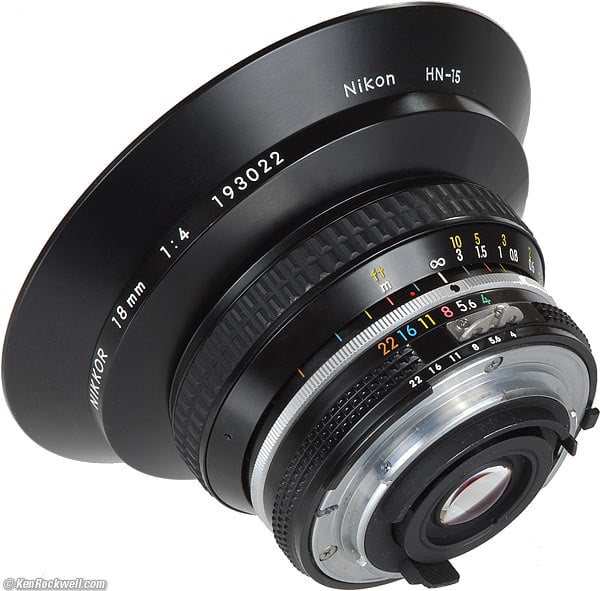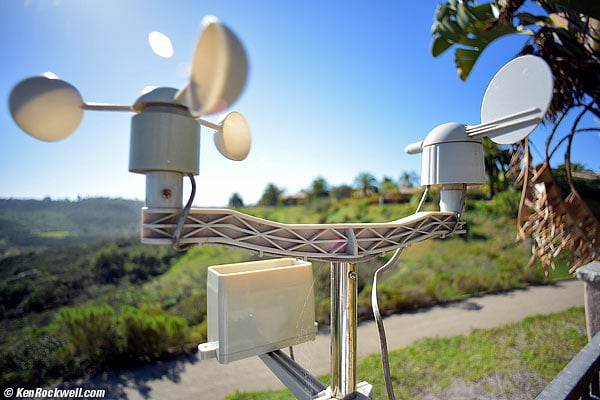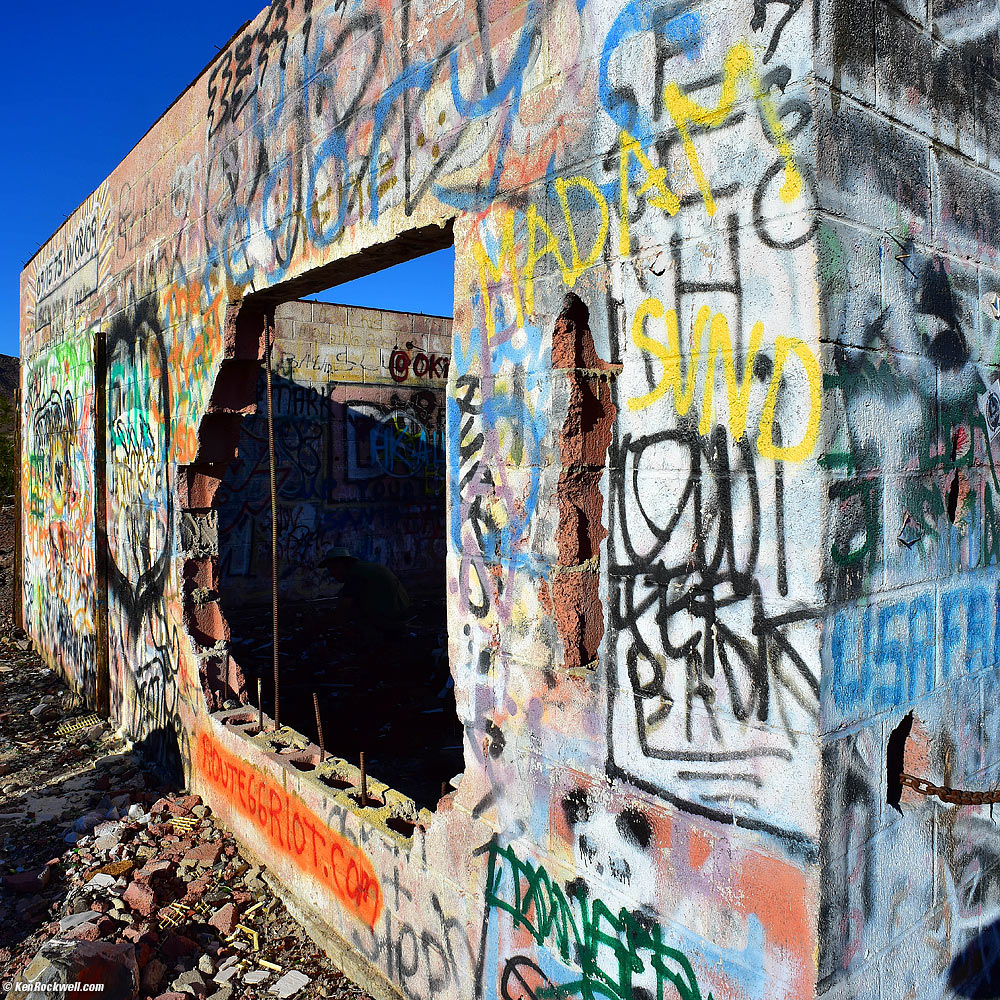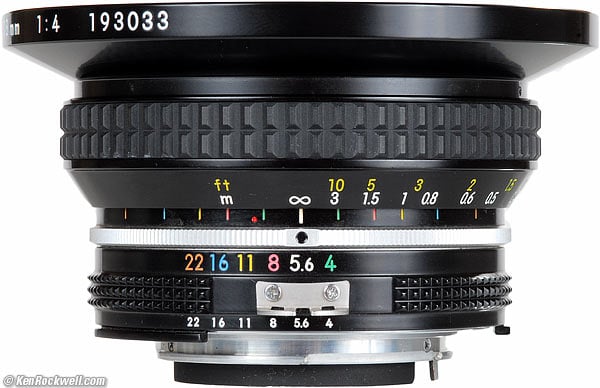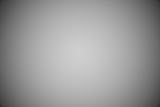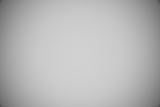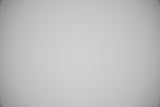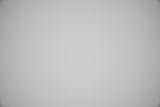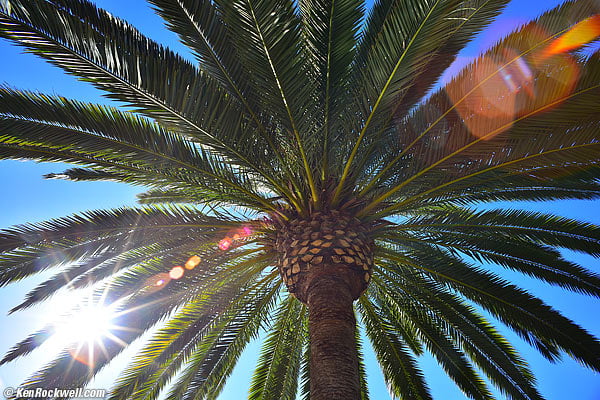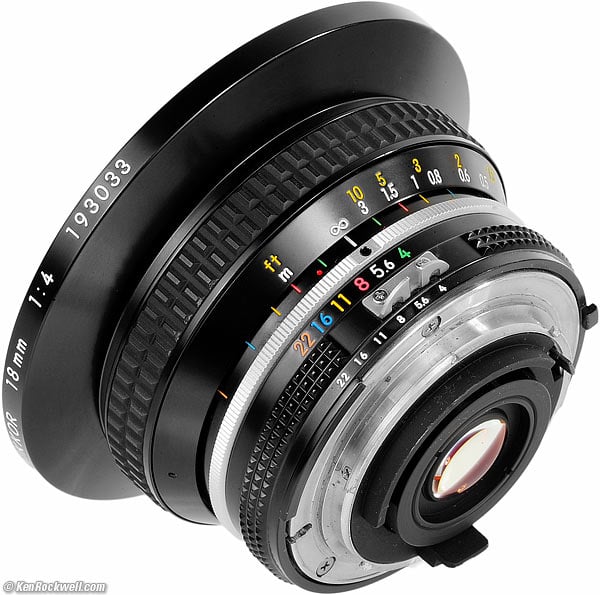Home Donate New Search Gallery Reviews How-To Books Links Workshops About Contact
Nikon 18mm f/4
NIKKOR (1974-1981)
© 2015 KenRockwell.com. All rights reserved.
Sample Images Intro Specifications Performance
Compared Usage Recommendations
Nikon 18mm f/4 AI (FX, DX and 35mm coverage, 86mm screw-in or Series IX filters in hood, 11.3 oz./321g, 1'/0.3m close focus, about $500 used). enlarge. I got mine at this direct link to it at eBay (see How to Win at eBay).
This all-content, junk-free website's biggest source of support is when you use those or any of these links to approved sources when you get anything, regardless of the country in which you live. Buy only from the approved sources I use myself for the best prices, service, return policies and selection. Thanks for helping me help you! Ken.
June 2015 Nikon Reviews Nikon Lenses All Reviews
Why fixed lenses take better pictures
Sample Images (more in the review) top
Sample Images Intro Specifications Performance
Compared Usage Recommendations
Tom's, 06 February 2015. Nikon D810, Nikon 18mm f/4, f/8 at 1/250 at ISO 100. Bigger or Full resolution.
Casa del Desierto at Dawn, Barstow, 8:04 AM, February 2015. Nikon D810, Nikon 18mm f/4 NIKKOR AI, f/11 at 1/125 at Auto ISO 100. bigger or Full 36 MP Resolution.
Old Metal Signs, Barstow, 3:40 PM, February 2015. Nikon D810, Nikon 18mm f/4 NIKKOR AI, f/5.6 at 1/20 hand-held at Auto ISO 450. bigger.
Bar Stock Receding into the Distance in Black-and-White, 4:10 PM, February 2015. Nikon D810, Nikon 18mm f/4 NIKKOR AI, f/8 at 1/15 hand-held at Auto ISO 180, split-toned print. bigger.
Abandoned Route 66 Gas Station in Black-and-White, 1:14 PM, February 2015. Nikon D810, Nikon 18mm f/4 NIKKOR AI, f/11 at 1/250 at Auto ISO 100, split-toned print. bigger.
Lonely Old Recliner as Seen Through Huge Gaping Hole in Route 66 Cinder-Block Wall in Black-and-White, 3:29 PM, February 2015. Nikon D810, Nikon 18mm f/4 NIKKOR AI, f/5.6 at 1/250 at Auto ISO 100, split-toned print. bigger.
Introduction top
Sample Images Intro Specifications Performance
Compared Usage Recommendations
Compatibility History Production
This 18mm f/4 is Nikon's first 18mm lens, introduced in 1974. Presuming it's an AI version or an older version updated to AI, it works great on all full-frame Nikon DSLRs.
Optically it's as good as all newer Nikon 18mm lenses; the only significantly better lenses optically are the latest 16-35mm f/4 VR and 14-24mm f/2.8 AF-S.
Oddly, when you compare them closely, all the newer 18mm lenses add is the ability to use smaller filters or autofocus; basic optical quality isn't any better in the newer fixed 18mm lenses.
This was one of Nikon's most expensive lenses when new, and it's still very expensive today.
This manual-focus Nikon 18mm f/4 AI works great with most Nikon cameras, 35mm and digital.
On DSLRs and the F6, use the "Non-CPU Lens Data" menu option to set 18mm and f/4 to get full color matrix metering, EXIF data and finder read-out of set aperture. It works great in aperture-preferred as well as manual modes on these cameras.
It works flawlessly with every manual focus Nikon ever made, from the original Nikon F of 1959 through the FM3a and today's FM-10.
It works perfectly on every professional 35mm camera (F, F2, F3, F4, F5, F6), and adds Matrix metering on the FA, F4 and F6.
The meters of cheaper digital (D3300, D90, D5500 and below) and cheaper film cameras (N80 and below) will not couple (or work at all) with this lens, so you'll be on your own guessing exposure using the rear LCD or an external meter, or get a tiny Gossen Digisix meter and hotshoe adapter, or use an app to meter manually.
See Nikon Lens Compatibility for details on your camera. Read down the "AI, AI-s" column for this lens.
1974-1981: 18mm f/4
This 18mm f/4 was Nikon's first 18mm lens.
It was their widest lens that took front mounted filters when it was introduced in 1974.
The 15mm f/5.6 was introduced the year before in 1973, but only could use rear filters.
The huge 13mm f/5.6 was introduced a year later, in 1975, but also only takes rear filters.
This 18mm f/4 was sold as an F-mount lens from 1974-1976, and then as an AI lens from 1977-1981.
1981-2005: 18mm f/3.5 AI-s
The 18mm f/3.5 AI-s replaced this lens in 1981.
It weighs a little bit more, but is faster to focus and take normal 72mm screw-in filters.
The 18mm f/3.5 also added Nikon's Close Range Correction (CRC) system to lessen astigmatism as focussed more closely.
1994-2006: 18mm f/2.8 AF-D
The Nikon 18mm f/2.8 AF-D added autofocus and a stop more speed, using an aspherical element.
Nikon made about 4,000 of these 18mm f/4 lenses, which isn't very many.
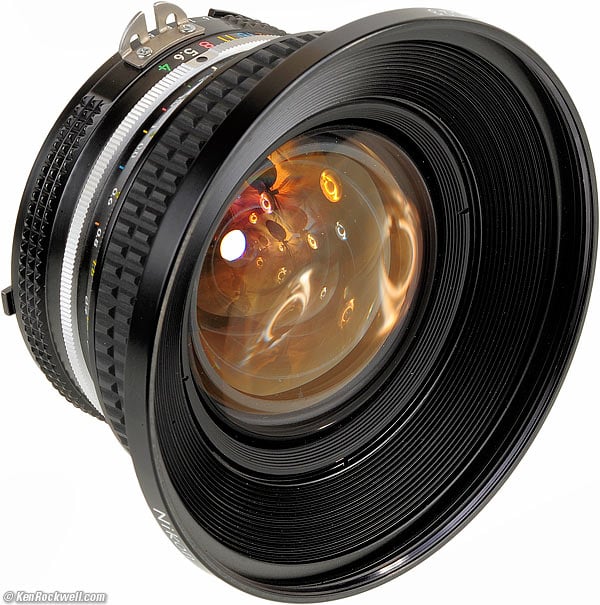
Nikon 18mm f/4 AI.
Specifications top
Sample Images Intro Specifications Performance
Compared Usage Recommendations
Name
Nikon calls this the Nikon NIKKOR 18mm f/4. Newer ones are called AI.
Optics top
13 elements in 9 groups.
It's multicoated, which Nikon calls Nikon Super Integrated Coating.
Diaphragm top
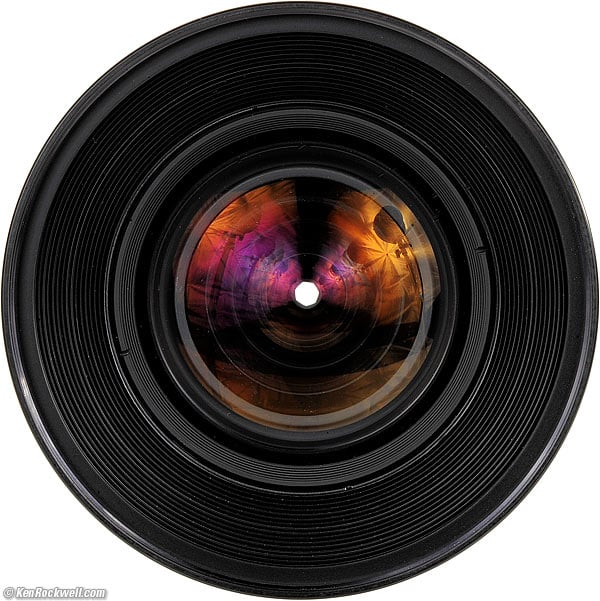
Nikon 18mm f/4 AI at f/5.6.
7 straight blades.
Stops down to f/22.
Aperture Ring top
Yes.
Metal.
Full-stop clicks.
Close Focus top
1 foot.
0.3 meters.
Maximum Reproduction Ratio top
1:12.3 (0.08x).
Angle of View top
100° diagonal on FX and 35mm.
76° diagonal on small-format DX.
Focal Length top
18mm.
On a small-format DX camera, this lens makes pictures that see an angle-of-view similar to what a 27mm lens would see on a full-frame camera.
Hard Infinity Focus Stop? top
Yes.
This is great for astronomy; just turn to the stop and you have fixed laboratory-perfect focus all night.
Focus Scale top
Yes.
Very precise.
Depth-of-Field Scale top
Yes, colored lines corresponding to the colored f/stops on the aperture ring.
Infra-Red Focus Index top
Yes: red dot in depth-of-field scale.
Filters top
86mm (metal threads)
or
Series 9 (serie IX) held inside HN-15 hood.
Does not rotate.
Size top
Nikon specifies 1.83" (46.5mm) extension from flange (2.30" or 58.5mm overall) by 3.50" (89mm) diameter.
Weight top
11.320 oz. (320.95g) lens alone.
With hood but no caps: 12.245 oz. (347.15g).
Metal 86mm cap alone: 1.270 oz. (36.0g).
Nikon specifies 11.5 oz. (325g) for the newer AI model shown here, or 11.1 oz. (315g) for the earlier model.
Caps top
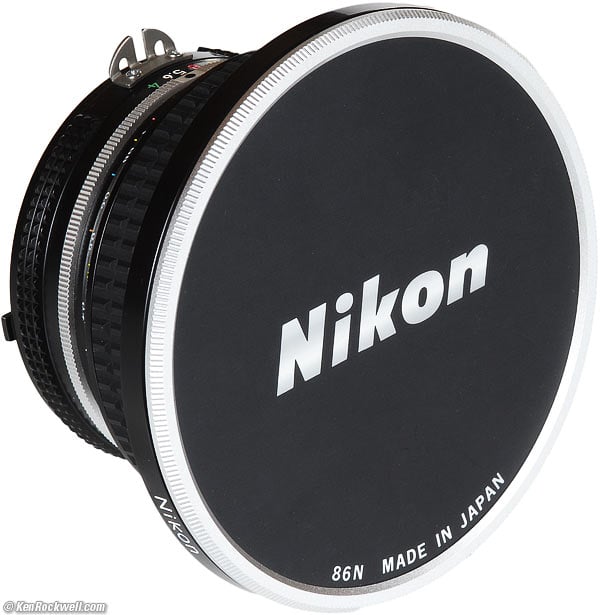
Nikon 18mm f/4 with 86N metal screw-in front cap.
Glorious metal screw-in front cap, type 86N. It's made in three pieces: one anodized aluminum threaded ring, one big round black anodized aluminum plate with "Nikon" turned in 3D shiny letters on it, and a circlip to hold it all together. This is a far cry from the crappy plastic cap that doesn't even keep out the dust that comes with today's 14-24mm.
Of course any 86mm cap works, too.
Standard Nikon rear cap.
Hood top
Nikon 18mm f/4 AI with HN-15 hood. enlarge.
HN-15 metal screw-in hood.
Case top
CL-28.
Made in top
Japan.
Teleconverters top
You've got to be kidding me, but if you insist, Nikon says the TC-200/201 will turn this in to a 36mmm f/8 and the TC-14A will turn this into a 25mm f/5.6.
Price, USA top
2015 February: About $500 used for a nice one like this or $300 for a beat up one, if you know How to Win at eBay.
1977: $410 new at discount at B&H; which is the same as $1,600 in 2014 with inflation. Very few people bought their lenses this inexpensively back then and usually paid much more at retail.
Performance top
Sample Images Intro Specifications Performance
Compared Usage Recommendations
Overall Focus Bokeh Color Distortion Ergonomics
Falloff Filters Flare & Ghosts Focus Breathing Hood
Color Fringes Macro Mechanics Sharpness Sunstars
Overall performance top
The 18mm f/4 AI is an extremely well-made ultrawide with performance typical for all Nikon 18mm lenses.
Focus performance top
Manual focus is as smooth as silk, perfectly damped with no play. It flicks with a fingertip.
Manual focus is flawless, both with a real camera like the Nikon F3, or with the three-way ( " > o < " ) manual focus indicators on better DSLRs and most professional AF cameras.
DX DSLRs may only have one "OK" focus dot, which is not as precise as two arrows and a dot. You'd have to be silly to use this on DX; the 18-55mm kit lens is a smarter idea on DX.
Bokeh performance top
Ultrawide lenses rarely have anything out of focus except when they are focussed at one foot.
If you do defocus it that much, bokeh, the character of out-of-focus backgrounds, not simply how far out of focus they are, is fair to poor.
Full-frame shot wide-open at f/4 at one foot. © Camera-original file.
Color Rendition performance top
Abandoned Route 66 Cinder-Block Building with Graffiti, 3:27 PM, February 2015. Nikon D810, Nikon 18mm f/4 NIKKOR AI, f/16 at 1/125 at Auto ISO 100. bigger.
The color rendition of this multicoated Nikon 18mm f/4 matches my other modern NIKKORs.
Distortion performance top
The Nikon 18mm f/4 has complex "moustache" distortion. The central area bulges out, the zonal region halfway-out pulls-in, and then the corners pull out again.
The central area bulges more and over a bigger region as you get closer.
At 10 feet (3 meters) and longer the distortion is usually invisible and best left alone with Photoshop's lens distortion filter. It has no particular barrel or pincushion distortion; it has about an even mixture of both, and it's not bad at all at longer distances.
At 3 feet (1 meter) and closer, the central bulging takes over, and it's best to use these figures in Photoshop's lens distortion filter for a basic correction. The corners will still pull-out. These aren't facts or specifications, they are the results of my research that requires hours of photography and calculations on the resulting data.
FX and Film |
|
30' (10m) |
0.0* |
10' (3m) |
0.0* |
3' (1m) |
+1.2* |
1' (0.3m) |
+2.5* |
© 2015 KenRockwell.com. All rights reserved.
* Waviness remains.
To correct the distortion fully you'd need a higher-order correction, but I doubt that DxO or anyone else has a module for this.
Ergonomics performance top
Nikon 18mm f/4 AI. enlarge.
The Nikon 18mm f/4's ergonomics are great. It's easy to focus with a fingertip, and the strongly flared front makes it easy to keep your fingers out of the picture, even without a hood.
Aperture setting is as expected, just turn the ring. Real shooters can set it with their eyes closed; we count clicks, and we can do it with a single fingertip.
Falloff (darkened corners) performance top
Falloff on FX is obvious at f/4, minor at f/5.6 and gone by f/8.
I've exaggerated this by shooting a gray field and placing these on a gray background. While it looks awful below, look at the sample at Bokeh which was shot at f/4 and looks great.
Nikon 18mm f/4 AI falloff on FX and film at infinity, no correction.
© 2015 KenRockwell.com. All rights reserved.
|
Filters, Use with performance top
While it might not be noticed on 35mm film, you will get vignetting with most screw-in 86mm filters on full-frame digital. You'd need an extra-thin 86mm filter to avoid the very far corners getting a little darker.
Better than screw-in filters, use a Series IX filter inside the hood. You won't get any vignetting on full-frame.
Flare and Ghosts performance top
As vintage ultrawide lenses go, the Nikon 18/4 is pretty good. You won't see any ghosts unless you go out of your way to conjure them as I've done here:
Nikon 18mm f/4 at f/11 on full-frame. bigger.
Except for deliberate ghost attempts like this, I never see any ghosts in actual images with light sources in them. I made the Sunstar shot a moment later with the sun partly behind a frond, instead of shining directly into my frame as I did here, and it's fine.
Focus Breathing performance top
Of interest mostly to cinematographers focusing back and forth between two subjects, the image from the Nikon 18mm f/4 gets only infinitesimally larger as focused more closely. You'd probably never notice it.
Hood performance top
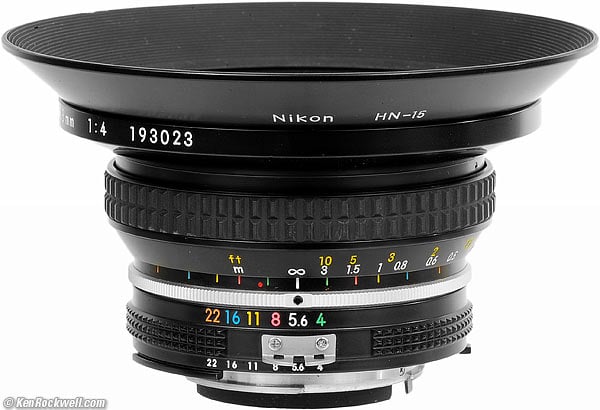
Nikon 18mm f/4 AI with HN-15 hood.
The HN-15 screw-in metal hood is more a filter holder than a hood.
Everything is so conical that this hood does little extra to shield the lens; it's already well shielded.
Lateral Color Fringes performance top
There are none throughout most of the full frame of the D810, which corrects them automatically.
There are blue-yellow lateral color fringes in the far corners of the D810. They probably would never be noticed on 35mm film. These don't get corrected by the D810 and are this lens' biggest optical limitation.
Macro performance top
While it focuses to a foot, its so wide that it doesn't appear to get very close.
It is very sharp in the center, even at f/4, at 1 foot.
Mechanics performance top
Nikon 18mm f/4 AI. enlarge.
Like all Nikkor manual focus lenses, the Nikon NIKKOR 18mm f/4 AI is built to the highest mechanical standards of any lens ever made.
Barrel Exterior
Anodized and enameled aluminum.
Filter Threads
Anodized aluminum.
Hood
Threaded anodized aluminum.
Focus Ring
Metal, rubber covered.
Focus Helicoids
Feels like brass: smooth and silky with no play or need for damping grease.
Depth-of-Field Scale
Engraved into barrel and filled with different colors of paint.
Internals
All metal.
Aperture Ring
Cast aluminum, anodized and enameled.
Engraved markings filled with different colors of paint coded to the depth-of-field scale.
Automatic Aperture-Coupling Prong
Stamped stainless steel.
Mount
Dull-chromed brass.
Markings
Engraved into the metal and filled with paint.
Identity and Serial Number
On newer versions like this one, engraved into the metal on the outside of the lens.
Engraved inside the filter threads on the earliest versions.
All are engraved and filled with paint.
Moisture Seal at Mount
No.
Noises When Shaken
None.
Made in
Japan.
Sharpness performance top
Warning 1: Image sharpness depends more on you than your lens.
Warning 2: Lens sharpness doesn't mean much to good photographers.
With those caveats, the 18mm f/4 AI is always super-sharp in the center, even at 36 megapixels wide-open at f/4.
The far corners of FX are limited mostly by the strong blue-yellow lateral color. It gets sharper as stopped down, but the lateral color remains.
The corners of course are softest at f/4, but it's not that obvious since falloff hides it. The corners get much sharper and lighter at f/5.6, and are sharpest by f/11.
HINT: The above is tested formally at the range at infinity. The 18/4 actually has a curved field. When focussed at infinity, the center is in focus at infinity, but the sides and corners are in best focus with the subject about 10 feet away.
Because of its field curvature, the corners don't seem that impressive wide-open when tested on unrealistic subjects with everything at infinity, but when used for real subjects, helps us because objects in the corner of ultrawide shots are almost always closer to us, and if not, we want them out of focus.
Of course at At f/16 and smaller, diffraction limits performance in the center, while lateral color limits it in the corners.
Sunstars performance top
With its straight 7-bladed diaphragm, the 18mm f/4 makes magnificent 14-pointed sunstars on brilliant points of light.
Palm with sunstar, 10 February 2015. Nikon D810, Nikon 18mm f/4, f/11 at 1/30 at ISO 100. Full resolution.
Compared top
Sample Images Intro Specifications Performance
Compared Usage Recommendations
See also 18mm lenses compared, and specifically the comparison table.
This lens is the shortest with the largest diameter and weighs a little less than the others. There isn't much physical difference.
This 18mm f/4 has the most expanded focus scale. The best way to focus any of these lenses manually is usually to guess at the distance and set it on the scale, since depth of field is so great that looking through the finder doesn't help much to focus. With its much bigger focus scale, this method works better on this f/4 lens than on any other Nikon 18mm or ultrawide zoom.
Versus 18mm f/3.5 AI-s
The newer 18/3.5 takes smaller filters and has a longer, smaller-diameter focus ring for faster — but less precise — focussing.
The 18/3.5 also focusses closer: 0.85 feet or 0.25m.
The 18/3.5 is as sharp throughout most of the image, except that the 18/3.5 is better in the far FX corners since it has much less lateral color than the 18/4.
Versus 18mm f/2.8 AF-D
The newest 18/2.8 adds autofocus and might be a tad sharper in the center at f/2.8 thanks to its aspherical optics, but sadly is actually softer in the corners than the f/3.5 at smaller apertures!
This 18/2.8 also feels like the toughest of this bunch, with its crinkle-coat paint. It also focusses to 0.85 feet/0.25m.
Usage top
Sample Images Intro Specifications Performance
Compared Usage Recommendations
It's usually easiest to focus by guessing the distance and setting it on the expanded focus scale.
The image in the finder doesn't change much as focussed, since the depth of field wide open is almost unlimited, so guessing is actually usually more precise at longer distances.
Use Series IX filters and the hood, since screw-in filters often vignette.
Recommendations top
Sample Images Intro Specifications Performance
Compared Usage Recommendations
Don't even think about using this on a DX camera. Yes, it works, but any 18-55mm kit lens is sharper on DX, autofocuses, doesn't require any programming for EXIF and auto exposure data, and of course zooms.
This is an ultrawide lens best used only on full-frame, both DSLR and 35mm film.
The Nikon 18mm f/4 is a manual-focus only lens.
Since it costs about the same as the 20mm f/2.8 AF-D and has about the same performance, I'd get the AF lens instead. The focal length isn't that much wider, and having AF and all the metering modes is a Godsend.
If you prefer the feel of ultimate precision over plastic, then get one of these. The 18/3.5 is about the same, with slightly sharper corners due to less lateral color. The 18/2.8 AF costs much more, and adds old-style screw autofocus, and is about as sharp in the corners as this f/4 classic.
This is a great lightweight and ultra-high mechanical quality ultrawide for use on all Nikon FX and 35mm cameras. If you have one or find one, great, but I'd look for the 18/3.5 first for manual focus, or the 20mm f/2.8 AF-D or 18/2.8 AF if you prefer autofocus.
If you need the ultimate in optical quality, only the newest 16-35mm f/4 VR and 14-24mm f/2.8 AF-S are better than any of the fixed 18mm lenses or other ultrawide zooms. All the other 18mm lenses and older ultrawide zooms are about the same optically.
For most people today, the 16-35mm f/4 VR is the best choice, while this lens is for people who appreciate getting the same pictures for half the price, half the size and half the weight.
Help me help you top
I support my growing family through this website, as crazy as it might seem.
The biggest help is when you use any of these links when you get anything, regardless of the country in which you live. It costs you nothing, and is this site's, and thus my family's, biggest source of support. These places have the best prices and service, which is why I've used them since before this website existed. I recommend them all personally.
If you find this page as helpful as a book you might have had to buy or a workshop you may have had to take, feel free to help me continue helping everyone.
If you've gotten your gear through one of my links or helped otherwise, you're family. It's great people like you who allow me to keep adding to this site full-time. Thanks!
If you haven't helped yet, please do, and consider helping me with a gift of $5.00.
As this page is copyrighted and formally registered, it is unlawful to make copies, especially in the form of printouts for personal use. If you wish to make a printout for personal use, you are granted one-time permission only if you PayPal me $5.00 per printout or part thereof. Thank you!
Thanks for reading!
Mr. & Mrs. Ken Rockwell, Ryan and Katie.
Home Donate New Search Gallery Reviews How-To Books Links Workshops About Contact

